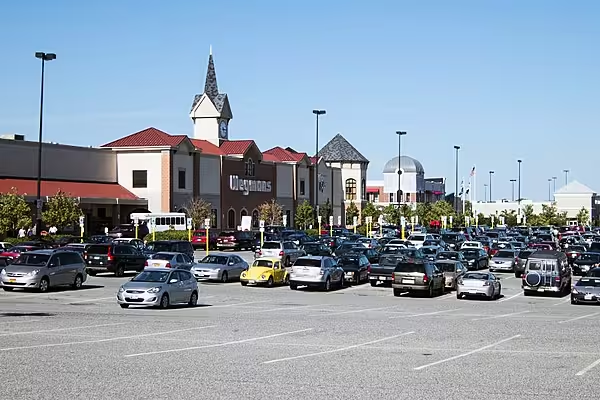As if malls didn’t have enough problems, count one more: retailers looking to slash the duration of their leases.
After more than a dozen bankruptcies this year contributed to thousands of store closures, visibility for the industry is so poor that retailers are pushing for lease renewals as short as a year or two -- down from five to 10 years.
“You’re certainly seeing the renewals geared toward the shorter term, rather than the five-year renewal,” said Andrew Graiser, head of A&G Realty Partners. Retailers are now struggling to figure out how many stores they actually need, he added, and landlords are looking at them “with a much closer eye than they did before.”
Somewhere between 9,000 and 10,000 stores will close in the U.S. this year, said Garrick Brown, vice president of Americas retail research for commercial broker Cushman & Wakefield -- more than twice as many as the 4,000 last year. He sees this figure rising to about 13,000 next year.
“Everyone’s trying to figure out where the bottom of the market’s going to be,” Brown said. He estimates it could occur in 2018 or early 2019.
And even companies that are relatively healthy are moving to prune back hundreds of store locations, making it less obvious for property owners which tenants they may lose. Deterioration can come fast: Some retailers that were in good shape a year ago are now on the edge today after vendor and financing support dried up, Graiser said.
Retail’s footprint reduction is underway for a wide swathe of the industry, cutting across formats and product categories. Macy’s Inc., the biggest U.S. department-store chain, has announced plans to close 100 underperforming stores, including 68 this year. Signet Jewelers Ltd., which owns the Kay, Zales and Jared brands, will shutter 165 to 170 stores at malls with dwindling foot traffic, while athleisure vendor Lululemon Athletica Inc. is closing 40 stores operated under its Ivivva brand.
Other prominent retailers that are closing stores include Michael Kors Holdings Ltd., J.C. Penney Co., Sears Holdings Corp., Children’s Place Inc. and Payless Inc.
Further complicating the lease-length dilemma is the question of which shopping centers will still be around in a decade. Cushman & Wakefield’s Brown sees about 300 of 1,150 U.S. malls shutting down in the next five years.
More Bankruptcies
Perry Mandarino, senior managing director and head of corporate finance at B. Riley & Co., predicts that retail bankruptcies and restructurings will further accelerate in 2018. Some of this will be the result of a long-overdue shakeout of the surfeit of U.S. store space, but the downturn is also compounded by shifts to online shopping and consumers spending on experiences rather than physical stuff, he said.
In this environment, retailers that would have automatically renewed marginally profitable stores are increasingly willing to close them if they can’t make a deal, said Ken Frieze, CEO of Gordon Brothers. His company’s services include overseeing store closures.
Landlords “have their backs against the wall, so they’ve been fighting back, hard,” he said. “What you have is a game of chicken up to the end.”
They do have some leverage. Roughly a third of U.S. malls designated as A-level, or premium, are doing just fine. The high demand for those spaces is being used to drive occupancy in less desirable shopping centers via lease-agreement conditions that bind tenants to also opening stores in B- and C-level centers.
This long-time strategy is growing in popularity, according to turnaround specialist Steven Agran, managing director at Carl Marks & Co.
Excess Inventory
“With all this excess inventory, landlords are trying to do whatever they can to keep malls occupied,” Agran said. “The more empty spaces, the more difficult it is to attract new tenants.”
Landlords are also eliminating co-tenancy clauses, which allow retailers to break leases or reduce rents if a key mall tenant -- traditionally one of the department stores -- shutters, Brown said.
But the move to tie premium leases to less-desirable spaces may have unintended consequences, said Suzanne Mulvee, director of research and senior real estate strategist at consultant CoStar Group Inc.
“It may be working in reverse against mall owners,” she said, since forcing retailers to open more stores may just trigger more closures going forward. “It can backfire.”
News by Bloomberg, edited by ESM. Click subscribe to sign up to ESM: The European Supermarket Magazine.














